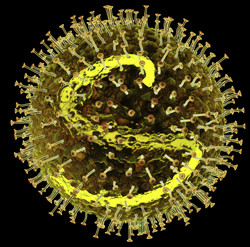Viral replication at the atomic level
Despite its medical importance and the extensive vaccination campaigns, measles has not been eradicated yet. Efforts to design antiviral therapies against the virus replication complex have been unsuccessful as its structure and formation have not been characterised in detail. The measles virus is an RNA virus containing a genome transcribed through the concerted action of the viral phosphoprotein P and nucleoprotein N (NTAIL). Scientists on the EU-funded VIRAL_IDP project worked on delineating the structure and the mechanism underlying the association of the replication complex proteins. Accumulating evidence suggests that the C-terminal domain of NTAIL is intrinsically disordered. Upon binding to phosphoprotein P, it undergoes helical folding, essentially changing its shape. To fully understand the molecular basis of this interaction, scientists had to construct atomic resolution models of the proteins before and after replication complex formation. To this end, they employed spectroscopic methods in order to describe the proteins that present high flexibility. They validated previous observations that NTAIL consisted of multiple helical structures and it was possible to further characterise the dynamics of the inter-conversion between the different populations. This information helped project researchers to elucidate the mechanism by which NTAIL controls the initiation of viral transcription and replication. Overall, the work by the VIRAL_IDP project shed light into the basic biochemical mechanisms that govern genome replication and transcription in the measles virus. The methods developed during the study for the biophysical characterisation of the measles virus could find applications elsewhere.







